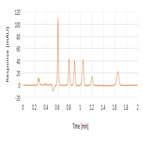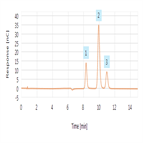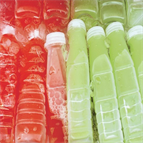Find methods for your needs
Refine by Feature
Displaying 1-5 of 14 results for Tag: Beverage
Rapid and sensitive UHPLC screening of food dyes in carbonated beverages using UV/Vis wavelength switching
Instrument Type: UHPLCThe analysis of food dyes in carbonated beverages is important as many of these dyes are either controlled substances or are being phased out in certain countries due to their reported adverse health effects. Being able to identify and quantify food dyes in beverages quickly and with high sensitivity is therefore important. Reversed-phase chromatography is an excellent technique for the analysis of dyes. Many dyes are readily soluble in reversed-phase eluents and have strong visible and UV absorbance properties. This method demonstrates the separation of ten contentious dyes.
Rapid analysis of natural sweeteners found in food and beverages using an advanced UHPLC system
Instrument Type: UHPLCOver the last decade there has been a growing interest in low-calorie alternatives to carbohydrate-based sweeteners. Recent publications have shown a dramatic increase in attention toward natural extracts such as the Stevia rebaudiana plant, not only for its sweetening effect but also for additional health benefits attributed to the plant. The major sweetening components are stevioside, rebaudioside A, rebaudioside C, and dulcoside A, each of which is over 300 times sweeter than sucrose based sweeteners. Because of this they are widely used in beverages and foodstuffs.
AN1152: Determination of Carbohydrates in Kombucha Using HPAE-PAD
Instrument Type: ICThe method uses the Thermo Scientific™ Dionex™ CarboPac™ PA20 column with electrolytically generated hydroxide eluent and a 15 mil gasket for the gold working electrode to separate and detect glucose, fructose and sucrose in kombucha.
Analysis of Plasticizer Contaminants in Beverages and Milk using an Automated System Based on Turbulent-flow Chromatography Coupled to LC-MS/MS
Instrument Type: LCMSMSPhthalates are known endocrine disruptors that have been used to deliberately adulterate beverages and sports drinks in Taiwan. Phthalates and other plasticizers are ubiquitous contaminants particularly in fatty foodstuffs. Contamination arises from numerous sources such as the environment and food packaging. Cross-contamination with phthalates can easily arise during trace analysis in the laboratory and there are significant advantages in minimizing sample handling through online automated analysis. A method using online Thermo Scientific TurboFlow chromatography is presented.
Determination of Sugars in Functional Drinks Using a Compact IC System
Instrument Type: ICExcess sugar consumption is tied to poor health outcomes. Nutritional information including sugar amount is required in the Nutrition Facts label for all pre-packaged foods and drinks by The Nutrition Labeling and Education Act. A high-performance anion exchange method with pulsed amperometric detection (HPAE-PAD) has been developed to accurately determine the sugar concentrations. Here shows the determination of sugars in functional drinks using the Thermo Scientific Dionex Integrion system. This system allows fast determination of sugars with no eluent preparation or sample derivatization.





